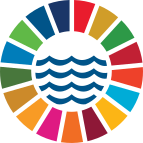Research for contributing to SDG14 on marine plastics distribution and deep-sea biodiversity
Japan Agency for Marine-Earth Science and Technology (JAMSTEC)
(
Academic institution
)
#OceanAction46667
Description
We are investigating distribution of marine plastics from the sea surface to deep-sea floor in the western North Pacific. The data are partially open to public on JAMSTEC’s Deep-sea Debris Database. In collaboration with the Republic of Palau, UNEP related organization, and private sectors, we conducted microplastic survey on a race yacht and escort ship during the Japan-Palau friendship yacht race in FY2019. Ocean literacy programme was conducted toward the children and their families of Palau and sailing trainees from Japan on the escort ship during the race. We will continue collaboration with non-academic parties including yacht community to enhance capacity of marine plastic monitoring and promote ocean literacy. We have been conducting surveys on the abundance and distribution of plastic debris that leaks out from massive waste producers including East Asian countries and that flows through the Kuroshio current, focusing on the upstream, midstream, and downstream of the Kuroshio current. We are particularly focusing on the re-circulation gyres of the Kuroshio current where debris can be accumulated, and investigating the abundance of debris that settles in the deep-sea floor under the re-circulation gyres. We are also developing new technologies to rapidly measure microplastic that requires long-term monitoring in the global ocean. Finally, we cooperate with the Integrated Marine Debris Observation System (IMDOS) to work on the long-term monitoring and the harmonization of analytical methods. JAMSTEC has been tackling to understand the biodiversity in deep sea that is still one of the frontier environments. Since the approaches to study there are still restricted and cost consuming, the establishment of more effective approaches and the monitoring of the biodiversity with them are highly expected. In our activities, the analyses of environmental DNAs and captured videos/images are introduced to monitor the deep-sea biodiversity and the obtained information has been utilized for the discussion regarding marine conservation, such as the management of the Marine Protected Areas. Such information has been also deposited to OBIS, data sharing platform operated by UNESCO/IOC, and the whole activities have been proposed to be a part of Marine Life 2030 that is an endorsed program in Ocean Decade. Through our activities, the knowledge including in the areas of conservation of the sea and marine resources including biodiversity is surely accumulated and will contribute to achieve the challenges of SDG14.
UNEP, UNESCO/IOC/GOOS, UNESCO/IOC/OBIS, IMDOS, GEO Blue Planet
SDGS & Targets
Goal 14
Conserve and sustainably use the oceans, seas and marine resources for sustainable development
14.1
By 2025, prevent and significantly reduce marine pollution of all kinds, in particular from land-based activities, including marine debris and nutrient pollution
14.1.1
(a) Index of coastal eutrophication; and (b) plastic debris density
14.2
By 2020, sustainably manage and protect marine and coastal ecosystems to avoid significant adverse impacts, including by strengthening their resilience, and take action for their restoration in order to achieve healthy and productive oceans
14.2.1
Number of countries using ecosystem-based approaches to managing marine areas
14.3
Minimize and address the impacts of ocean acidification, including through enhanced scientific cooperation at all levels
14.3.1
14.4
By 2020, effectively regulate harvesting and end overfishing, illegal, unreported and unregulated fishing and destructive fishing practices and implement science-based management plans, in order to restore fish stocks in the shortest time feasible, at least to levels that can produce maximum sustainable yield as determined by their biological characteristics
14.4.1
14.5
By 2020, conserve at least 10 per cent of coastal and marine areas, consistent with national and international law and based on the best available scientific information
14.5.1
14.6
By 2020, prohibit certain forms of fisheries subsidies which contribute to overcapacity and overfishing, eliminate subsidies that contribute to illegal, unreported and unregulated fishing and refrain from introducing new such subsidies, recognizing that appropriate and effective special and differential treatment for developing and least developed countries should be an integral part of the World Trade Organization fisheries subsidies negotiation
14.6.1
Degree of implementation of international instruments aiming to combat illegal, unreported and unregulated fishing
14.7
By 2030, increase the economic benefits to Small Island developing States and least developed countries from the sustainable use of marine resources, including through sustainable management of fisheries, aquaculture and tourism
14.7.1
Sustainable fisheries as a proportion of GDP in small island developing States, least developed countries and all countries
14.a
Increase scientific knowledge, develop research capacity and transfer marine technology, taking into account the Intergovernmental Oceanographic Commission Criteria and Guidelines on the Transfer of Marine Technology, in order to improve ocean health and to enhance the contribution of marine biodiversity to the development of developing countries, in particular small island developing States and least developed countries
14.a.1
14.b
Provide access for small-scale artisanal fishers to marine resources and markets
14.b.1
Degree of application of a legal/regulatory/policy/institutional framework which recognizes and protects access rights for small‐scale fisheries
14.c
Enhance the conservation and sustainable use of oceans and their resources by implementing international law as reflected in United Nations Convention on the Law of the Sea, which provides the legal framework for the conservation and sustainable use of oceans and their resources, as recalled in paragraph 158 of "The future we want"
14.c.1
Number of countries making progress in ratifying, accepting and implementing through legal, policy and institutional frameworks, ocean-related instruments that implement international law, as reflected in the United Nations Convention on the Law of the Sea, for the conservation and sustainable use of the oceans and their resources
SDG 14 targets covered
| Name | Description |
|---|---|
| 14.1 | By 2025, prevent and significantly reduce marine pollution of all kinds, in particular from land-based activities, including marine debris and nutrient pollution |
| 14.5 | By 2020, conserve at least 10 per cent of coastal and marine areas, consistent with national and international law and based on the best available scientific information |
| 14.a | Increase scientific knowledge, develop research capacity and transfer marine technology, taking into account the Intergovernmental Oceanographic Commission Criteria and Guidelines on the Transfer of Marine Technology, in order to improve ocean health and to enhance the contribution of marine biodiversity to the development of developing countries, in particular small island developing States and least developed countries |
Deliverables & Timeline
Project on the Marine Plastics Research Project in Collaboration With Japan-Palau Goodwill Yacht Race (https://www.unep.org/fr/node/27401)
Science papers of plastic distribution in the western Pacific. eg.) Nakajima, R. et al. (2021) (https://doi.org/10.1016/j.marpolbul.2021.112188)
Science papers on the effects of plastics on deep-sea organisms. eg.) Ikura, T. et al. (2021) (https://doi.org/10.3389/fmars.2021.751848)
Providing deep-sea biodiversity data to OBIS
Resources mobilized
Partnership Progress
Feedback
Action Network

Timeline
Entity
SDGs
Other beneficiaries
Yacht race participants
Ocean Basins
Communities of Ocean Action
Countries

Headquarters
Contact Information
Shinji, Manager

